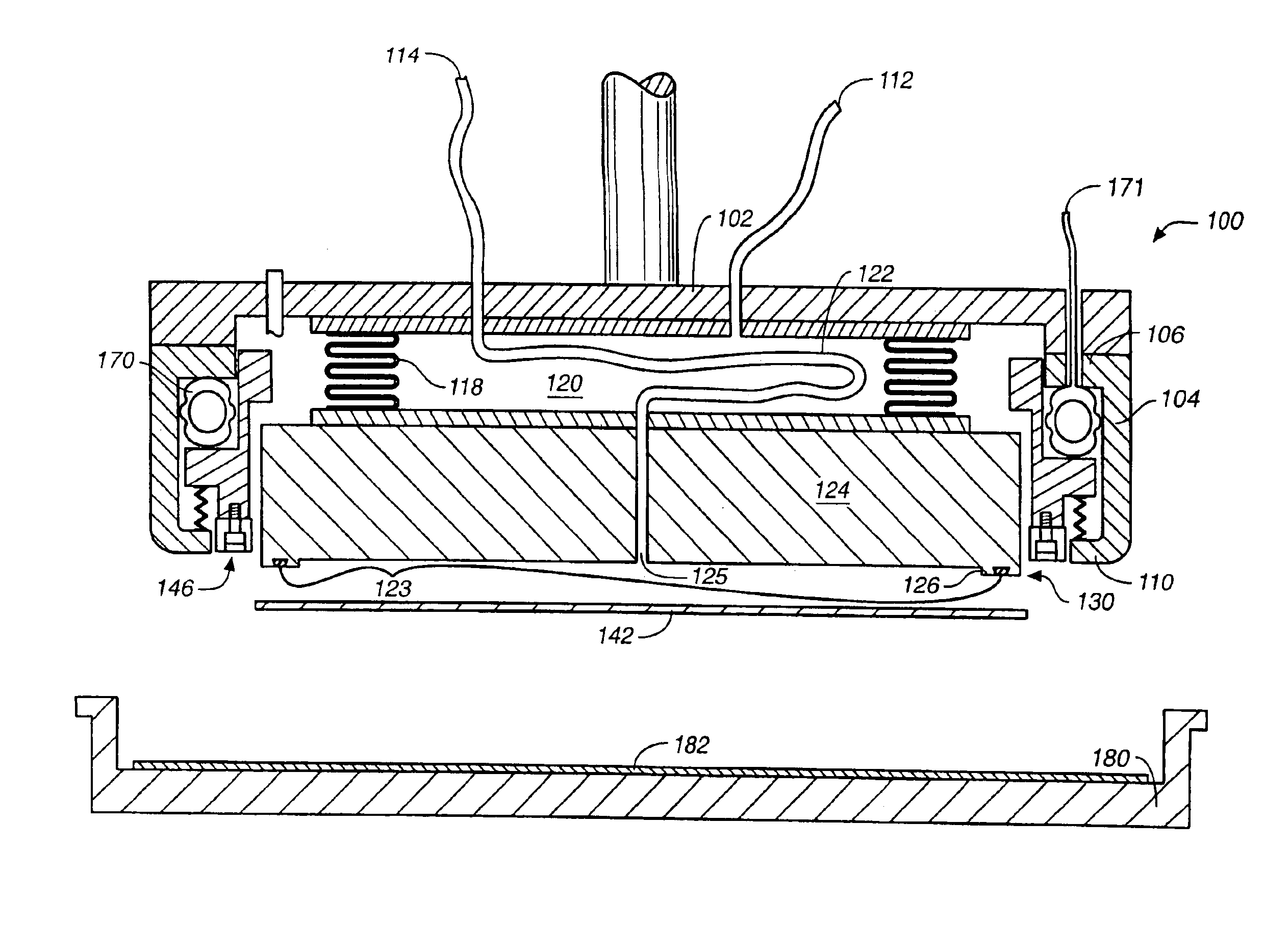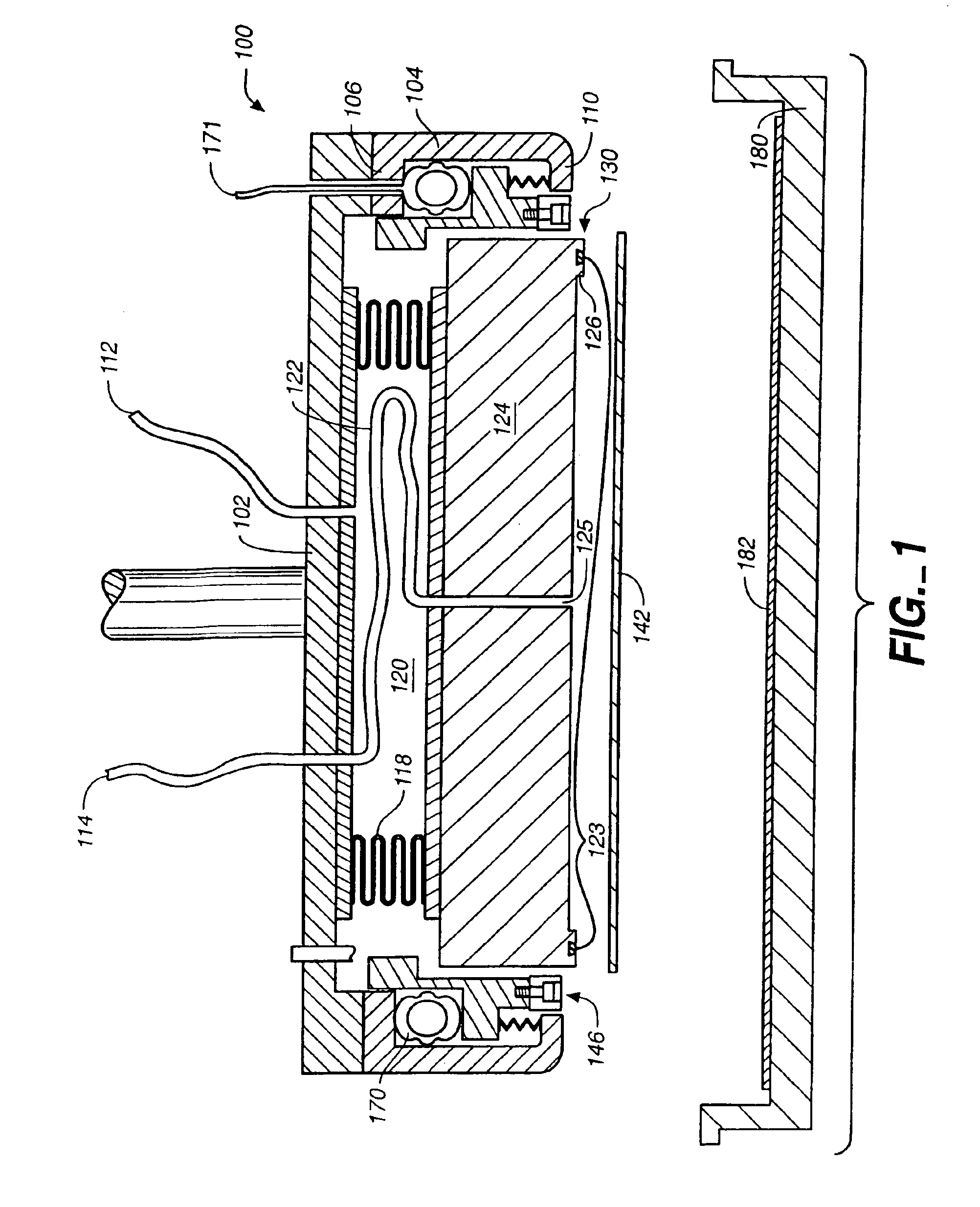Fluid-pressure regulated wafer polishing head
- Summary
- Abstract
- Description
- Claims
- Application Information
AI Technical Summary
Benefits of technology
Problems solved by technology
Method used
Image
Examples
Embodiment Construction
[0020]FIG. 1 shows a polishing head assembly 100 in a configuration according to the invention. The polishing head 100 includes a polishing head housing support plate 102 which is integral with its rod or stem support member. This support plate 102 is generally circular so as to match the circular configuration of the substrate or wafer 142 to be polished. A polishing head housing descending wall 104 is attached to the bottom of the support plate 102 by a descending wall top flange 106. The descending wall 104 includes a lower lip 110 which curves inward toward the wafer 142. The descending wall 104 encloses a wafer perimeter retaining ring assembly 146 enclosing a wafer backing member 124. The wafer backing member 124 is attached to the support plate 102 by a bellows 118 which allows a vertically variable vacuum seal. The bellows 118 encloses a bellows chamber 120. The bellows chamber 120 can be pressurized positively or negatively through a gas passage 112 to which is connected th...
PUM
| Property | Measurement | Unit |
|---|---|---|
| Force | aaaaa | aaaaa |
| Pressure | aaaaa | aaaaa |
| Area | aaaaa | aaaaa |
Abstract
Description
Claims
Application Information
 Login to View More
Login to View More - R&D Engineer
- R&D Manager
- IP Professional
- Industry Leading Data Capabilities
- Powerful AI technology
- Patent DNA Extraction
Browse by: Latest US Patents, China's latest patents, Technical Efficacy Thesaurus, Application Domain, Technology Topic, Popular Technical Reports.
© 2024 PatSnap. All rights reserved.Legal|Privacy policy|Modern Slavery Act Transparency Statement|Sitemap|About US| Contact US: help@patsnap.com










